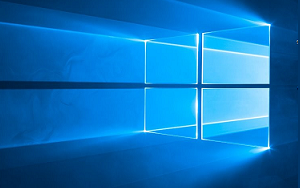Learn how to recall an email in Microsoft Outlook with this detailed guide. Discover the steps, prerequisites, and limitations involved in effectively recalling an email. Ensure you minimize email mishaps and maintain professional communication.
Step-by-Step Guide to Recalling an Email in Outlook
In the fast-paced world of digital communication, mistakes are inevitable. Whether it's sending an email to the wrong recipient, including incorrect information, or simply having a change of heart, Microsoft Outlook offers a feature that allows users to recall sent emails. This article provides a comprehensive, step-by-step guide on how to recall an email in Outlook, ensuring you can maintain professional communication at all times.
Understanding the Email Recall Feature in Outlook
Before diving into the steps, it's important to understand what the email recall feature entails. The recall feature in Outlook allows you to retrieve a sent email under certain conditions. This feature is only available for emails sent within the same organization using Microsoft Exchange Server.
Prerequisites for Recalling an Email
- Both sender and recipient must be using Microsoft Outlook and connected to Microsoft Exchange Server.
- The email must not have been read or moved from the recipient's inbox.
- The recall attempt must occur within a short timeframe after the email is sent, ideally within minutes.
Step-by-Step Instructions to Recall an Email
Step 1: Open Sent Items
1. Launch Microsoft Outlook and navigate to the Sent Items folder located in the folder pane on the left side of the Outlook window.
Step 2: Select the Email
2. In the Sent Items folder, locate and select the email you wish to recall. Double-click to open the email in a new window.
Step 3: Access Recall Options
3. In the new email window, navigate to the Message tab on the ribbon.
4. Click on Actions in the Move group.
5. From the dropdown menu, select Recall This Message.
Step 4: Choose Recall Options
6. A new window titled Recall This Message will appear.
7. Choose either Delete unread copies of this message or Delete unread copies and replace with a new message.
8. Optionally, check the box to receive a notification on the success or failure of the recall.
Step 5: Confirm the Recall
9. Click OK to initiate the recall process.
Potential Outcomes of an Email Recall
The success of recalling an email in Outlook is contingent on several factors. Here are the possible outcomes:
- Successful Recall: If the recipient has not read or moved the email, the recall should succeed, and the email will be deleted from their inbox.
- Partial Success: If the recipient has read the email but not moved it, the recall will not delete the email, but you will be notified of the attempt.
- Failure: If the email has been moved to another folder or read by the recipient, the recall will fail, and the email will remain in their inbox.
Limitations of the Email Recall Feature
While the email recall feature can be useful, it has its limitations:
- It only works with Microsoft Exchange Server accounts.
- It is not effective if the recipient has opened the email.
- It cannot retrieve emails sent to external recipients outside of the organization.
Tips for Avoiding Email Mistakes
To minimize the need to recall emails, consider the following tips:
- Double-Check Recipients: Always verify the recipient list before sending an email.
- Review Content: Proofread the email content for errors or incorrect information.
- Use Delay Send: Utilize Outlook's Delay Send feature to delay email delivery by a few minutes, allowing for last-minute changes.
Conclusion
Recalling an email in Outlook can be a lifesaver in certain situations, but it's important to understand the prerequisites and limitations involved. By following the step-by-step guide provided, you can effectively recall emails and maintain professional communication. Additionally, implementing best practices for email management will help reduce the likelihood of errors, ensuring your digital correspondence remains efficient and error-free.







